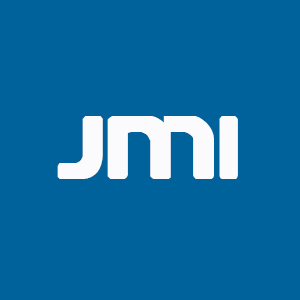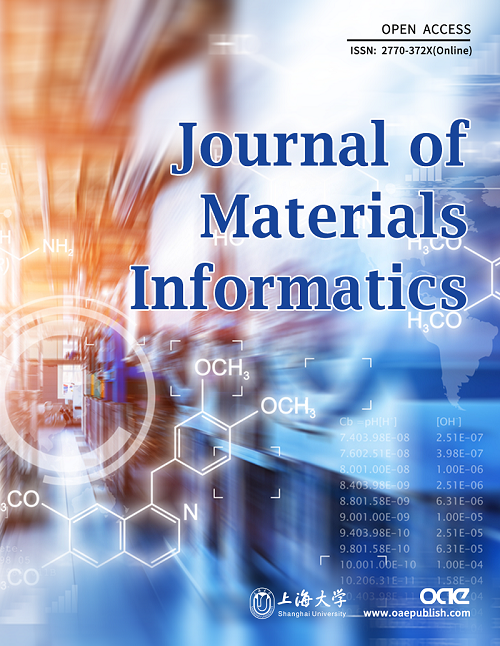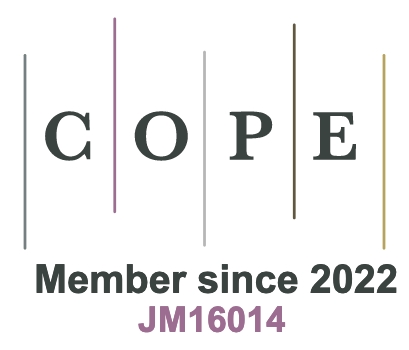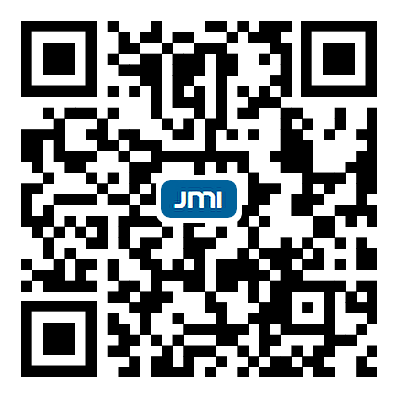REFERENCES
1. Zhang D, Qiu D, Gibson MA, et al. Additive manufacturing of ultrafine-grained high-strength titanium alloys. Nature 2019;576:91-5.
2. Korkmaz ME, Waqar S, Garcia-collado A, Gupta MK, Krolczyk GM. A technical overview of metallic parts in hybrid additive manufacturing industry. J Mater Res Technol 2022;18:384-95.
3. Hirtler M, Jedynak A, Sydow B, Sviridov A, Bambach M. A study on the mechanical properties of hybrid parts manufactured by forging and wire arc additive manufacturing. Procedia Manuf 2020;47:1141-8.
4. Murakami Y, Endo M. Effects of defects, inclusions and inhomogeneities on fatigue strength. Int J Fatigue 1994;16:163-82.
5. Murakami Y. Effects of small defects and nonmetallic inclusions on the fatigue strength of metals. JSME Int J Ser 1989;32:167-80.
6. Piascik RS, Gangloff RP. Environmental fatigue of an Al-Li-Cu alloy: part I. Intrinsic crack propagation kinetics in hydrogenous environments. Metall Trans A 1991;22:2415-28.
7. Piascik RS, Gangloff RP. Environmental fatigue of an Al-Li-Cu alloy: Part II. Microscopic hydrogen cracking processes. Metall Trans A 1993;24:2751-62.
8. Davidson CJ, Griffiths JR, Machin AS. The effect of solution heat-treatment time on the fatigue properties of an Al-Si-Mg casting alloy. Fatigue Fract Eng Mat Struct 2002;25:223-30.
9. Zhu M, Xuan F, Chen J. Influence of microstructure and microdefects on long-term fatigue behavior of a Cr–Mo–V steel. Mat Sci Eng A 2012;546:90-6.
10. Zhu M, Xuan F, Du Y, Tu S. Very high cycle fatigue behavior of a low strength welded joint at moderate temperature. Int J Fatigue 2012;40:74-83.
11. Zhu M, Jin L, Xuan F. Fatigue life and mechanistic modeling of interior micro-defect induced cracking in high cycle and very high cycle regimes. Acta Mater 2018;157:259-75.
12. Jordan MI, Mitchell TM. Machine learning: trends, perspectives, and prospects. Science 2015;349:255-60.
13. Bao H, Wu S, Wu Z, Kang G, Peng X, Withers PJ. A machine-learning fatigue life prediction approach of additively manufactured metals. Eng Fract Mech 2021;242:107508.
14. Zhan Z, Hu W, Meng Q. Data-driven fatigue life prediction in additive manufactured titanium alloy: a damage mechanics based machine learning framework. Eng Fract Mech 2021;252:107850.
15. Ye S, Huang W, Li M, Feng X. Deep learning method for determining the surface elastic moduli of microstructured solids. Extreme Mech Lett 2021;44:101226.
16. Luo C, Zhu S, Keshtegar B, Macek W, Branco R, Meng D. Active Kriging-based conjugate first-order reliability method for highly efficient structural reliability analysis using resample strategy. Comput Method Appl M 2024;423:116863.
17. Wu S, Liu J, Wang Y, Lu J, Zhang Z. Multiaxial low-cycle fatigue life model for notched specimens considering small sample characteristics. IJSI 2024;15:948-73.
18. Yang S, Meng D, Wang H, Yang C. A novel learning function for adaptive surrogate-model-based reliability evaluation. Philos Trans A Math Phys Eng Sci 2024;382:20220395.
19. Tarsha-Kurdi F, Landes T, Grussenmeyer P, Koehl M. Model-driven and da-ta-driven approaches using LIDAR data: analysis and comparison. 2007. Available from: https://www.researchgate.net/publication/32227577_Model-driven_and_data-driven_approaches_using_LIDAR_data_Analysis_and_comparison. [Last accessed on 29 Nov 2024].
20. Wang J, Chang Q, Xiao G, Wang N, Li S. Data driven production modeling and simulation of complex automobile general assembly plant. Comput Ind 2011;62:765-75.
21. Pozdnoukhov A, Foresti L, Kanevski M. Data-driven topo-climatic mapping with machine learning methods. Nat Hazards 2009;50:497-518.
22. Srinivasan V. Low cycle fatigue and creep–fatigue interaction behavior of 316L(N) stainless steel and life prediction by artificial neural network approach. Int J Fatigue 2003;25:1327-38.
23. Nasiri S, Khosravani MR, Weinberg K. Fracture mechanics and mechanical fault detection by artificial intelligence methods: a review. Eng Fail Anal 2017;81:270-93.
24. Barbosa JF, Correia JA, Júnior RF, Jesus AMD. Fatigue life prediction of metallic materials considering mean stress effects by means of an artificial neural network. Int J Fatigue 2020;135:105527.
25. Romano S, Brandão A, Gumpinger J, Gschweitl M, Beretta S. Qualification of AM parts: extreme value statistics applied to tomographic measurements. Mater Design 2017;131:32-48.
26. Plessis A, Yadroitsava I, Yadroitsev I. Effects of defects on mechanical properties in metal additive manufacturing: a review focusing on X-ray tomography insights. Mater Design 2020;187:108385.
28. Zhou Y, Zhang Z, Wang D, et al. New trends in additive manufacturing of high-entropy alloys and alloy design by machine learning: from single-phase to multiphase systems. J Mater Inf 2022;2:18.
29. Wang W, Yin J, Chai Z, et al. Big data-assisted digital twins for the smart design and manufacturing of advanced materials: from atoms to products. J Mater Inf 2022;2:1.
30. Xu P, Ji X, Li M, Lu W. Virtual sample generation in machine learning assisted materials design and discovery. J Mater Inf 2023;3:16.
31. Zhou Z, Shang Y, Yang Y. A critical review of the machine learning guided design of metallic glasses for superior glass-forming ability. J Mater Inf 2022;2:2.
32. Hu Y, Wu S, Withers P, et al. The effect of manufacturing defects on the fatigue life of selective laser melted Ti-6Al-4V structures. Mater Design 2020;192:108708.
33. Zhang M, Sun C, Zhang X, et al. High cycle fatigue life prediction of laser additive manufactured stainless steel: a machine learning approach. Int J Fatigue 2019;128:105194.
34. Serrano-Munoz I, Buffiere JY, Mokso R, Verdu C, Nadot Y. Location, location &size: defects close to surfaces dominate fatigue crack initiation. Sci Rep 2017;7:45239.
35. Benedetti M, Fontanari V, Bandini M, Zanini F, Carmignato S. Low- and high-cycle fatigue resistance of Ti-6Al-4V ELI additively manufactured via selective laser melting: Mean stress and defect sensitivity. Int J Fatigue 2018;107:96-109.
36. Ren S, Chen Y, Liu T, Qu X. Effect of build orientation on mechanical properties and microstructure of Ti-6Al-4V manufactured by selective laser melting. Metall Mater Trans A 2019;50:4388-409.
37. Barba D, Alabort C, Tang Y, Viscasillas M, Reed R, Alabort E. On the size and orientation effect in additive manufactured Ti-6Al-4V. Mater Design 2020;186:108235.
38. Liu J, Zhang K, Liu J, et al. Investigation of fatigue behavior of laser powder bed fusion Ti-6Al-4V: roles of heat treatment and microstructure. Int J Fatigue 2023;176:107839.
39. Sharma S, Sharma S, Athaiya A. Activation functions in neural networks. Int J Eng Appl Sci Technol 2020;4:310-6. Available from: https://www.ijeast.com/papers/310. [Last accessed on 29 Nov 2024]
40. Apicella A, Donnarumma F, Isgrò F, Prevete R. A survey on modern trainable activation functions. Neural Netw 2021;138:14-32.
41. Rumelhart DE, Hinton GE, Williams RJ. Learning representations by back-propagating errors. Nature 1986;323:533-6.
42. Dieter GE. Mechanical metallurgy. 3rd edition. McGraw Hill, New York, 1986. Available from: https://books.google.com/books?id=4pZRAAAAMAAJ&hl=zh-CN&source=gbs_book_other_versions. [Last accessed on 29 Nov 2024].
43. Murakami Y. Chapter 6 - Effects of nonmetallic inclusions on fatigue strength. In: Metal Fatigue. Elsevier; 2002. pp. 75-127.
44. Stromeyer CE. The determination of fatigue limits under alternating stress conditions. Proc R Soc Lond A 1914;90:411-25.
46. Yukitaka M, Masahiro E. Quantitative evaluation of fatigue strength of metals containing various small defects or cracks. Eng Fract Mech 1983;17:1-15.
47. Deng K, Wei H, Liu W, Zhang M, Zhao P, Zhang Y. Probabilistic-based random maximum defect estimation and defect-related fatigue life prediction for laser direct deposited 316L parts. J Mater Process Tech 2022;299:117389.
48. Liu F, He C, Chen Y, Zhang H, Wang Q, Liu Y. Effects of defects on tensile and fatigue behaviors of selective laser melted titanium alloy in very high cycle regime. Int J Fatigue 2020;140:105795.
49. Tang M, Pistorius PC. Fatigue life prediction for AlSi10Mg components produced by selective laser melting. Int J Fatigue 2019;125:479-90.
50. Zhang M, Sun C, Zhang X, Wei J, Hardacre D, Li H. Predictive models for fatigue property of laser powder bed fusion stainless steel 316L. Mater Design 2018;145:42-54.
51. Liu A, Xu Z, Liang Z, Wang X. An evaluation on high cycle fatigue fracture characteristics of 2024-T351 Al alloy with different surface defects. Mech Mater 2022;164:104133.
52. Chang D, Wang Q, Chen H, Zhang X, Wen J, Tu S. Effects of defect size and location on high cycle fatigue life of a maraging stainless steel at ambient and cryogenic temperatures. Int J Fatigue 2022;161:106906.
53. Tiryakioğlu M. Relationship between defect size and fatigue life distributions in Al-7 Pct Si-Mg alloy castings. Metall Mater Trans A 2009;40:1623-30.
54. Queiroz H, Araújo J, Silva C, Ferreira J. A coupled critical plane- area methodology to estimate fatigue life for an AISI 1045 steel with small artificial defects. Theor Appl Fract Mec 2022;121:103426.
55. Murakami Y, Takagi T, Wada K, Matsunaga H. Essential structure of S-N curve: prediction of fatigue life and fatigue limit of defective materials and nature of scatter. Int J Fatigue 2021;146:106138.
56. Li J, Yang Z, Qian G, Berto F. Machine learning based very-high-cycle fatigue life prediction of Ti-6Al-4V alloy fabricated by selective laser melting. Int J Fatigue 2022;158:106764.
57. Zhan Z, Li H. A novel approach based on the elastoplastic fatigue damage and machine learning models for life prediction of aerospace alloy parts fabricated by additive manufacturing. Int J Fatigue 2021;145:106089.
58. Zhan Z, Li H. Machine learning based fatigue life prediction with effects of additive manufacturing process parameters for printed SS 316L. Int J Fatigue 2021;142:105941.
59. Ayoub G, Naït-abdelaziz M, Zaïri F, Gloaguen J, Charrier P. Fatigue life prediction of rubber-like materials under multiaxial loading using a continuum damage mechanics approach: effects of two-blocks loading and R ratio. Mech Mater 2012;52:87-102.








